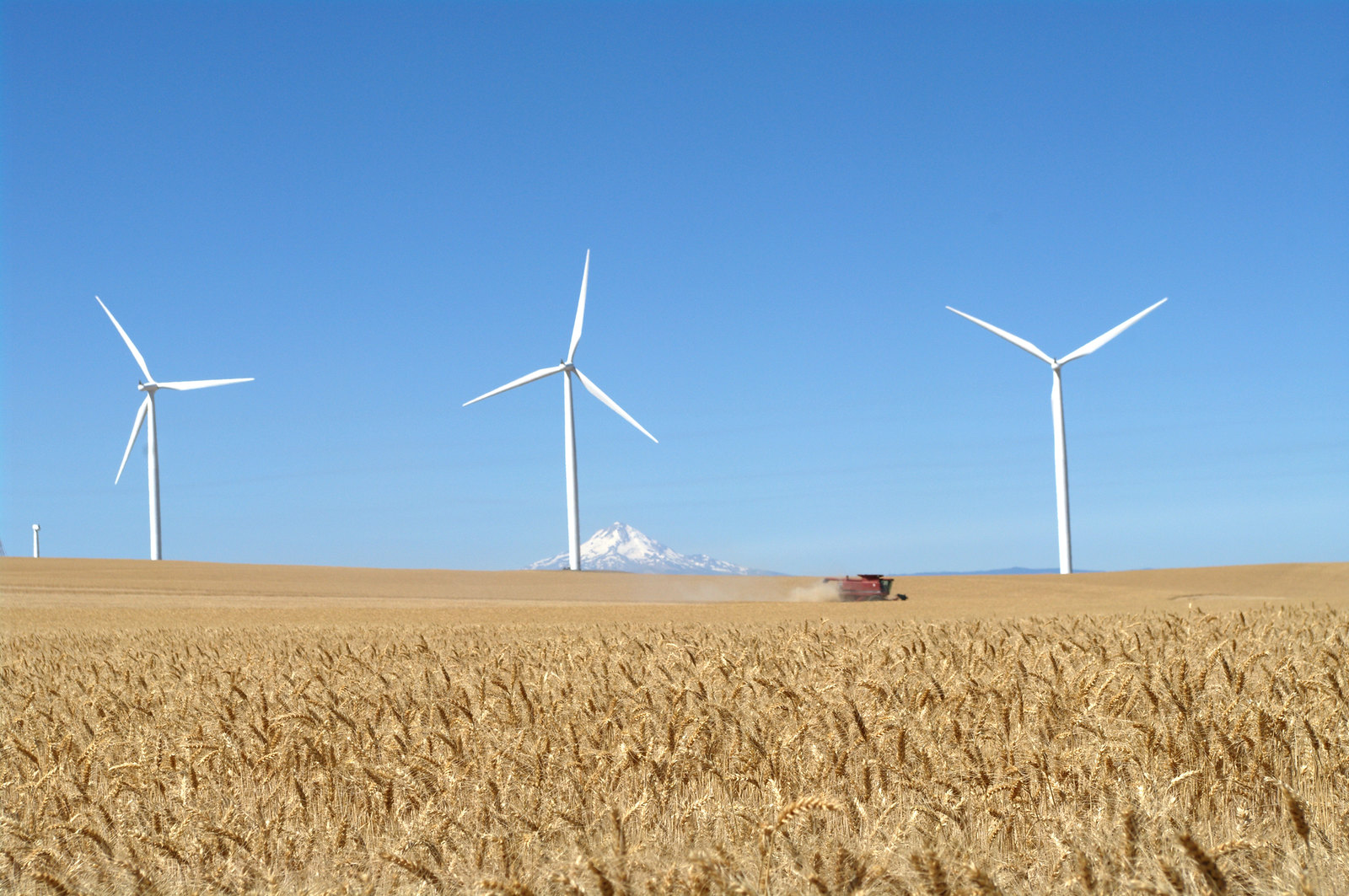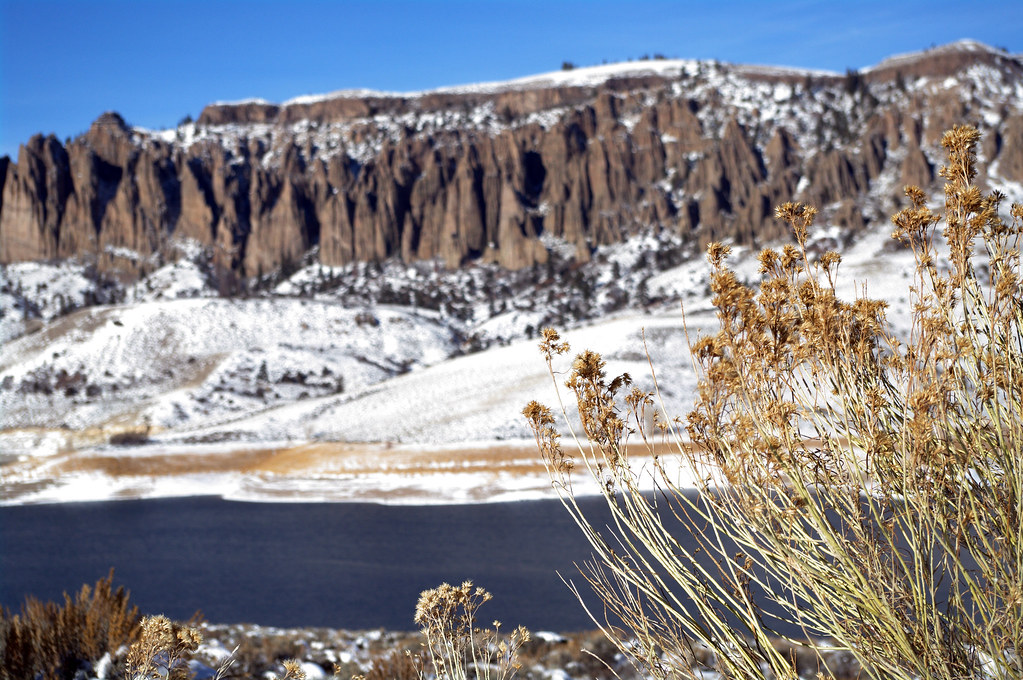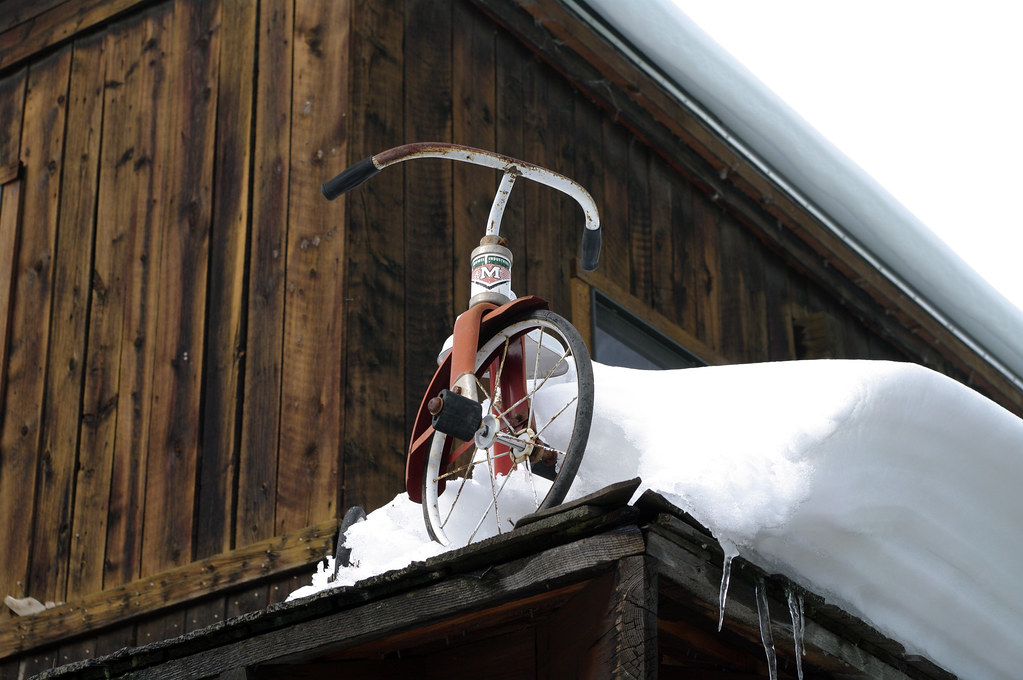Tuesday, December 31, 2013
Winter Holiday Visit to Colorado
Sara and I went to Colorado to visit family over the winter holidays, and stayed in the little town of Ouray for a few days, which is a lovely place, if not a little quiet during the winter. One thing that we've noted with all of our travels is that we're absolutely spoiled for food in Portland; the food scene in Portland is very good quality food for not all that much money.
Our travels took us to Gunnison, and Crested Butte, and it was full of nice, quiet, family time. More photos here.
Sunday, December 1, 2013
Does drinking from a snifter really matter?
For advanced fluid mechanics, we were assigned a pretty open-ended project, basically to find some neat fluid phenomenon and to photograph and explain it to the best of our abilities. Ondrej and I chose to analyze a snifter glass to see if there is really a reason people should be drinking from them, or if it is just tradition.
The theory behind snifters is that they will allow you to smell your whiskey better. You take your hand, cup the glass, and by virtue of your body heat, heat up the whiskey (no ice, please). This increases the rate of evaporation of the alcohol, which is the primary transit method of the aroma via whiskey congeners, which are responsible for the oak and other smells.
I was responsible for the gaseous stage analysis - what happens to the fluid flow once evaporation has happened. I started with the cylindrical Navier-Stokes equations and continuity, made a bunch of assumptions and boundary conditions, and started simplifying. What finally popped out at the end was a familiar equation for pipe flow, and I threw in a little twist to account for the angle of the snifter walls.
So, as you can see, the flow really is governed by the pressure gradient, and the glass geometry acts as a converging nozzle, just as expected. A fun little analysis, one that intuitively makes sense, but now at least I have the math to back it up. Here is a link to the presentation.
Cheers!
The theory behind snifters is that they will allow you to smell your whiskey better. You take your hand, cup the glass, and by virtue of your body heat, heat up the whiskey (no ice, please). This increases the rate of evaporation of the alcohol, which is the primary transit method of the aroma via whiskey congeners, which are responsible for the oak and other smells.
I was responsible for the gaseous stage analysis - what happens to the fluid flow once evaporation has happened. I started with the cylindrical Navier-Stokes equations and continuity, made a bunch of assumptions and boundary conditions, and started simplifying. What finally popped out at the end was a familiar equation for pipe flow, and I threw in a little twist to account for the angle of the snifter walls.
So, as you can see, the flow really is governed by the pressure gradient, and the glass geometry acts as a converging nozzle, just as expected. A fun little analysis, one that intuitively makes sense, but now at least I have the math to back it up. Here is a link to the presentation.
Cheers!
Friday, November 15, 2013
Polo Transitions
As I'm coming into the home stretch of my career change, I've been feeling the need to focus on projects other than polo, so after a year and a half of making and selling polo mallets to all over the world, and three years of being at the head of Portland Bike Polo, I'm stepping down from each. The club has purchased the rights to make and distribute the mallet heads, which are still some of the best available, and now I'm free to focus on playing!
Wednesday, August 28, 2013
Vertical Axis Wind Turbine Particle Image Velocimetry
After many months of mathematical modeling in MATLAB, design in SolidWorks, and prototyping with the 3D printer, I finally managed to develop a working scale model Vertical Axis Wind Turbine (VAWT) for use in the Wind Energy and Turbulence Lab to recreate some of the analysis done by Dabiri on potential energy density improvements for VAWT arrays.
The project was constrained by quite a few factors - size, form factor, aspect ratio, solidity, tip speed ratio, internal motor resistance, etc. and it wasn't until after two fluid dynamic classes that I was really able to approach the problem in an analytical way. I wound up doing a lot of airfoil research and settled on a asymmetric GOE-series airfoil that was able to provide a fair amount of lift over a large percentage of the arc. This is important, since with a VAWT, each airfoil is only in a position to be contributing lift during about a third of the time, so you really have to milk it for all it is worth.
Our research lab uses a wind tunnel and particle image velocimetry (PIV) as our primary experimental tool. The wind tunnel is pretty big, but you can only have one experiment in there at a time. As I'm an undergraduate researcher, I was at the top of the list for using the wind tunnel, right after guests, doctoral candidates, and master candidates. So, after about four months, I managed to get in and get trained on the tunnel and PIV by Betsy.
In short, the PIV process is pretty straight forward. A smoke machine pumps smoke (microscopic oil particles called seeds) into the wind tunnel, a terrifyingly high-powered laser illuminates a plane of the seeds, and an array of expensive cameras takes photos of how the seeds move from one micro-second to the next. Throw all of the photos into some processing software and it creates the averaged vector fields of how the overall airflow is moving, plus some post-processing in MATLAB. The devil of course, is in the details.
Makin sure that everything was set up correctly took a lot of time. Aligning the lasers, focusing the cameras, eliminating reflections from the laser (to not burn out the cameras), etc. took a long time. For every minute of experiment that I ran, there was about 100 minutes of setup time.
Above is a work-in-progress picture of the focusing rig inside of the tunnel. The VAWT is painted black to minimize reflections. Behind the VAWT at mid plane is a piece of paper: this is where the laser plane will be shining, so we will be getting information about the airflow in a thin sheet there. For this experiment I analyzed in front of the VAWT and a few planes behind the VAWT, all at the same height and orientation.
I have yet to do a full analysis on the results, but the great thing about PIV is that it makes some pretty pictures. Since Betsy is a pro at PIV, she made the following images for me.
So, what are we looking at? This first image is the overall velocity of particles moving downstream in the tunnel (downstream is positive U, looking downstream to the left is positive V, and up is positive W). Since the VAWT is spinning about the V axis you would think that it would create a skewed wake in the direction of its spin, and indeed the wake is clearly skewed to the right.
The next image shows the flow moving to the left and right of the VAWT, again with flow being just as we'd expect: the spinning rotor directs flow in very specific directions (note the negative signs indicating flow to the right).
Finally, this image shows the in and out of plane components, or the flow moving up and down. This shows the complex interactions that are happening as the bulk flow interacts with the mast, airfoils, motor mount, etc.
Hopefully I will get to further analyze this data; ultimately I'd love to write a publishable paper on it, but we'll see if that works out. Overall, it was a fantastic learning experience to be trained on and then carry out my own PIV experiment!
The project was constrained by quite a few factors - size, form factor, aspect ratio, solidity, tip speed ratio, internal motor resistance, etc. and it wasn't until after two fluid dynamic classes that I was really able to approach the problem in an analytical way. I wound up doing a lot of airfoil research and settled on a asymmetric GOE-series airfoil that was able to provide a fair amount of lift over a large percentage of the arc. This is important, since with a VAWT, each airfoil is only in a position to be contributing lift during about a third of the time, so you really have to milk it for all it is worth.
Our research lab uses a wind tunnel and particle image velocimetry (PIV) as our primary experimental tool. The wind tunnel is pretty big, but you can only have one experiment in there at a time. As I'm an undergraduate researcher, I was at the top of the list for using the wind tunnel, right after guests, doctoral candidates, and master candidates. So, after about four months, I managed to get in and get trained on the tunnel and PIV by Betsy.
In short, the PIV process is pretty straight forward. A smoke machine pumps smoke (microscopic oil particles called seeds) into the wind tunnel, a terrifyingly high-powered laser illuminates a plane of the seeds, and an array of expensive cameras takes photos of how the seeds move from one micro-second to the next. Throw all of the photos into some processing software and it creates the averaged vector fields of how the overall airflow is moving, plus some post-processing in MATLAB. The devil of course, is in the details.
Makin sure that everything was set up correctly took a lot of time. Aligning the lasers, focusing the cameras, eliminating reflections from the laser (to not burn out the cameras), etc. took a long time. For every minute of experiment that I ran, there was about 100 minutes of setup time.
Above is a work-in-progress picture of the focusing rig inside of the tunnel. The VAWT is painted black to minimize reflections. Behind the VAWT at mid plane is a piece of paper: this is where the laser plane will be shining, so we will be getting information about the airflow in a thin sheet there. For this experiment I analyzed in front of the VAWT and a few planes behind the VAWT, all at the same height and orientation.
I have yet to do a full analysis on the results, but the great thing about PIV is that it makes some pretty pictures. Since Betsy is a pro at PIV, she made the following images for me.
So, what are we looking at? This first image is the overall velocity of particles moving downstream in the tunnel (downstream is positive U, looking downstream to the left is positive V, and up is positive W). Since the VAWT is spinning about the V axis you would think that it would create a skewed wake in the direction of its spin, and indeed the wake is clearly skewed to the right.
The next image shows the flow moving to the left and right of the VAWT, again with flow being just as we'd expect: the spinning rotor directs flow in very specific directions (note the negative signs indicating flow to the right).
Finally, this image shows the in and out of plane components, or the flow moving up and down. This shows the complex interactions that are happening as the bulk flow interacts with the mast, airfoils, motor mount, etc.
Hopefully I will get to further analyze this data; ultimately I'd love to write a publishable paper on it, but we'll see if that works out. Overall, it was a fantastic learning experience to be trained on and then carry out my own PIV experiment!
Sunday, May 26, 2013
Biglow Canyon Wind Farm Analysis
As part of my work for the Wind Energy and Turbulence Lab I was given a large dataset from the Biglow Canyon Wind Farm in Eastern Oregon which covered ten minute average wind speed and direction for 217 some turbines and meteorological masts for all of 2011.
 |
| We visited the Biglow Canyon Wind Farm too! Pretty darn pretty! |
Originally to sort the data I wrote some loop heavy code that by my estimate (extrapolated tic toc) would take 6,000 some minutes to run... A few modifications later I got down to 2,000 minutes. Since this was still unacceptable, I set out to redo the code in a more linear index way, and got the run time down to 2.6 minutes! I was pretty proud of that.
Once I had the data sorted, I thought that I could get down to actually analyzing it, but I quickly realized that I had to learn some visualization techniques first to make sure the data actually made sense in its raw form of speed and direction. Some simple graphs, wind bins, and histograms showed a lot, but since the data was time and location based, I needed something more robust. I loaded up a USGS terrain elevation dataset, combined it with the tower coordinates, created a windspeed mesh colormap overlay, and started making movies MATLAB movies of the results. I'm not linking any movies, but here is a still frame.
| Windspeed in m/s on 2011-04-01 at 18:10 |
Subscribe to:
Posts (Atom)














